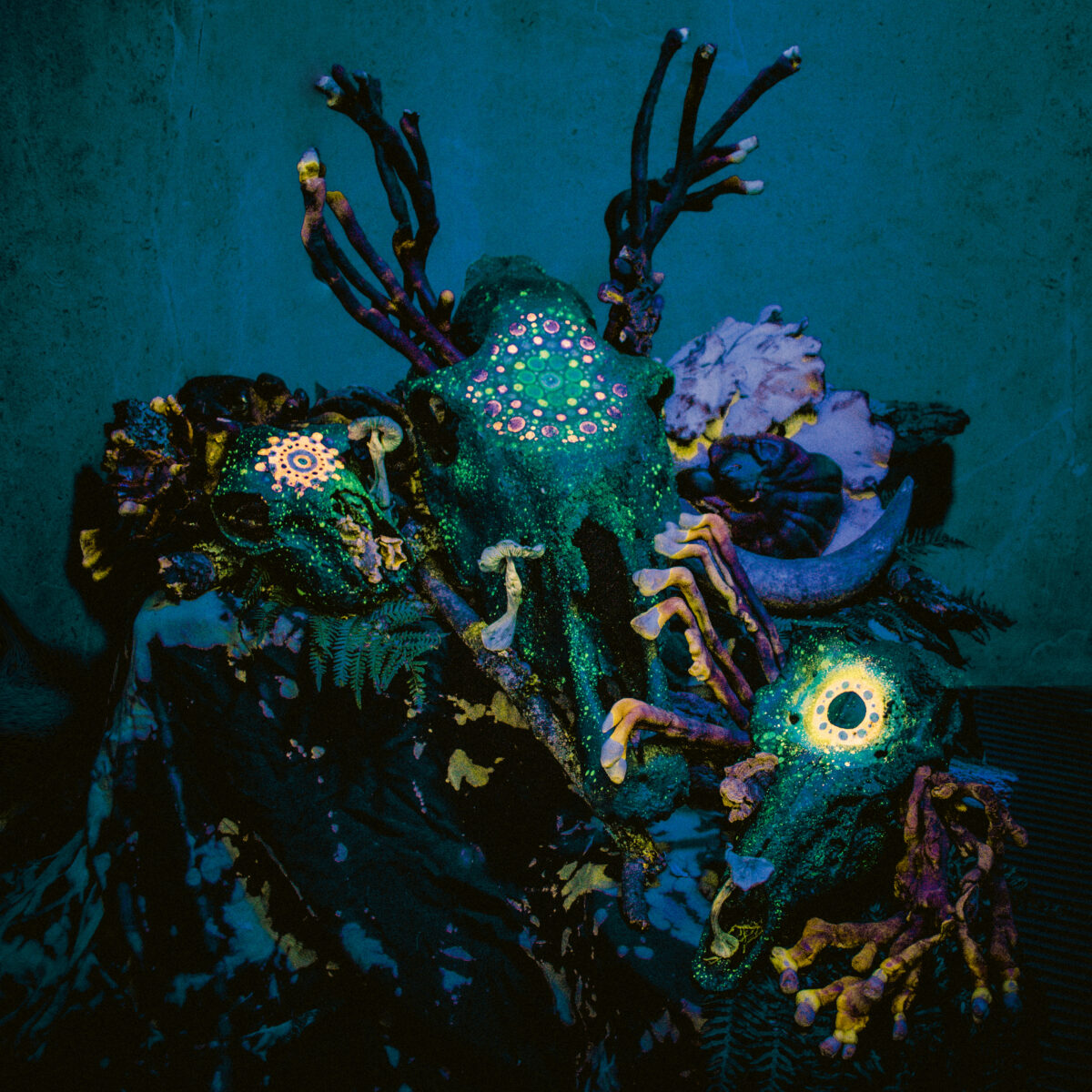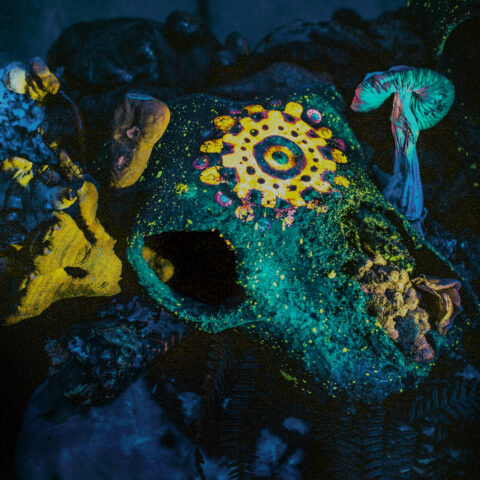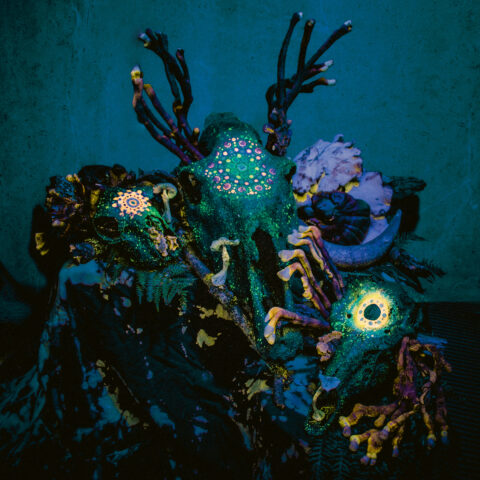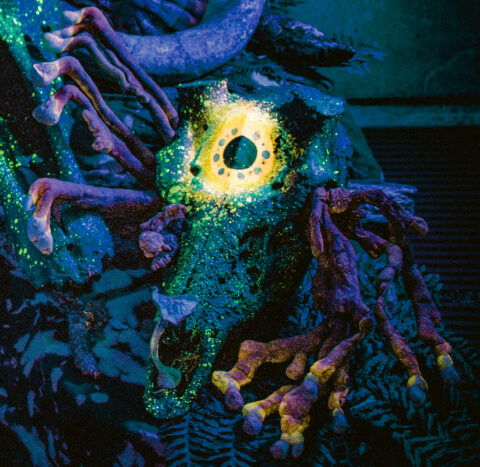MORI – Work in Progress
70cm², Sculpture
The Latin mori has two components. Here, the painted skulls precisely correspond to one definition of the word: to die. Alternatively, the reishi mushrooms (which grow from them) embody the second aspect of mori, meaning to conquer.
The sheep skull on the left, individually titled Stillborn, represents innocence and one of the most tragic modes of death. It prompts us to consider how seemingly unfair the fundamental facts of life can be. This harsh truth is presented here to embody the fragility of the human experience.
The horse skull in the center, alone, is called Sacrifice. In folklore, specifically in the British Isles, burying a horse skull was said to provide good fortune and protective magic. Sacrifice has been a major part of human history. So, the object bears this title to connect us to the idea of death through our ancestral heritage and ritual (which exemplifies our ability to contemplate our existence and the concept of God).
From here, we arrive at Slaughter, the hunted stag skull, which can be seen on the right side of the box. It represents how death directly influences the continuation of life, in this case, exemplifying the primal instinct to hunt and the cycle of predator-prey relationships in nature.
The addition of the Reishi mushrooms, which mimic antlers, transforms the skulls into representations of The Horned God, a deity of various pagan and nature-based spiritual traditions. This archetype is often associated with the cycles of the seasons, which themselves showcase a regenerative cycle; from new life in the spring to the height of summer, we meet the eventual decay of Autumn and death in Winter months.
Altogether, the triunity of figures unite the modes of existence; the sheep skull stands as creation (or the sky/heaven), the horse skull upholds preservation (or the earth), and the stag skull heralds destruction (or the underworld).
These symbolic representations of The Horned God exemplify him as a guide between these polarised elements of existence, metaphorically acting as a psychopomp and assisting us in the ability to conceptualize the transition from the realm of the living to the realm of the deceased.
Reishi is found throughout the history of Asian herbalism, labeled reishi in Japan, Linh chi in Vietnam, and lingzhi in China. But all of these terms translate loosely in English to supernatural mushroom or the mushroom of immortality.
While they don’t necessarily allow us to individually “supersede” death, mushrooms of all varieties play an important role in decomposition and life regeneration in a less anthropocentric sense.
The existence and modus operandi of mushrooms highlight the idea of interconnectedness. They contribute to the decomposition, balance, and renewal of living matter. This means all forms of being can and will eventually become something new.
This serves as a reminder that life is infinite, even if humankind is not.
❋
“From my rotting body flowers shall grow and I am in them and that is eternity.”



